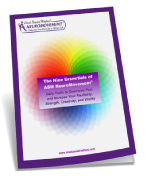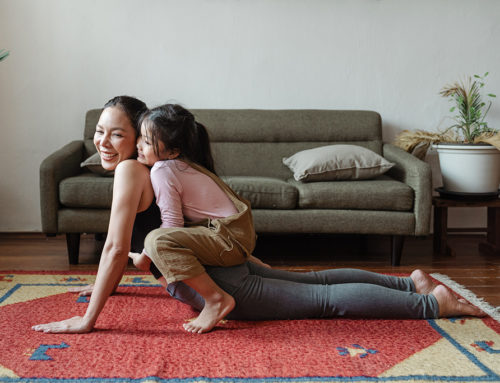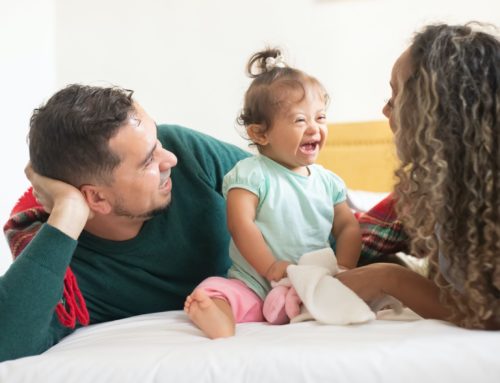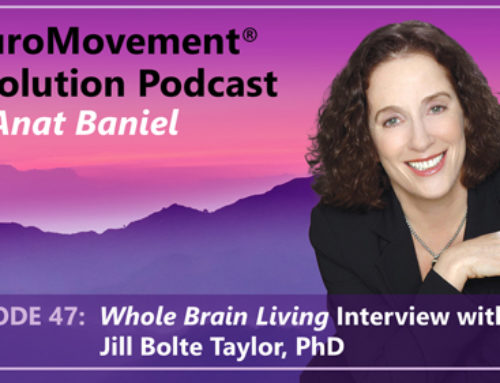Creating Awareness and New Possibilities for Children and Adults with Cerebral Palsy
NeuroMovement®: Harnessing the Power of the Brain to Change Itself
Today, March 25, is National Cerebral Palsy Awareness Day. And the entire month of March has now been designated as National Cerebral Palsy Awareness Month. I am so pleased that awareness of cerebral palsy is being pushed forward. As you may know, many children fall under the diagnosis of cerebral palsy, having a variety of different brain traumas and other conditions that end up limiting their ability to organize movement successfully.
Approximately 1 in 303 children in the United States have cerebral palsy (according to a recent study referenced by the CDC). That’s why it is so important that we create a platform for these children and adults so funding and innovation can go in that direction. In recognition of this day, we are posting this article (which was featured on the HuffPost TEDWeekends) about how children and adults with cerebral palsy can harness the power of the brain to reach new possibilities.
Maysoon Zayid was not supposed to walk, nor be the amazing and capable person she is today. She beat the odds. Many children with cerebral palsy do not.
Can other children like her surpass what doctors and others believe possible for them?
The answer is a resounding yes—by harnessing the remarkable powers of the brain to change itself for the better. How can that be done?
Cerebral Palsy is an injury to the brain that interferes with the spontaneous process of movement development in the child. It is easy to mistake the child’s limitations to mean that the brain itself is limited in its capacity to learn and that the current limitations define what is possible for the child in the future.
From 30 years of my colleagues and myself working with children with cerebral palsy, I find that by providing their brain with abundant new information, they become brilliant learners and the seemingly miraculous begins happening, just like with Maysoon. Current brain research validates that the “impossible” can become possible for many of these children as Kassi’s story below demonstrates.
I saw Kassi for the first time when she was three years old. She had suffered brain damage at birth, which left her with severe cerebral palsy. The muscles of her arms, legs, and belly were extremely tight (spastic), and there was very little movement that she could do on her own. When her parents placed her in a sitting position it was difficult to watch the great efforts Kassi made just to keep herself from falling.
After several months of regular weekly sessions, Kassi had improved greatly. (Some of the principles I used are described below). She gained mobility and control in her arms, hands, and back. She sat up comfortably and maintained her balance easily. Her speech improved, she was forming independent thoughts more frequently and learned to communicate her desires more clearly.
But there was one thing that seemed out of reach no matter what we did. Kassi’s legs remained tight and held together all the time, as if bound by invisible straps. When I moved her legs very slowly and gently I was able to separate them and move them freely and independently. But the moment Kassi tried to move her legs on her own, both her legs instantly became very spastic.
I kept wondering: how come her brain is able to figure out how to organize other movement so much better but not her legs?
One day, it suddenly dawned on me. Kassi did not have two legs. She had one leg! In her brain her two legs were mapped as one because they always moved together as one. She had never felt nor perceived the difference between her right leg and her left leg. And a difference that is not perceived does not exist. The brain didn’t have the information to recognize each of the legs separately and thus could not learn to control their movements. Until it did, no amount of exercising of her legs would make a difference. (See Research #1.)
It became clear that Kassi needed to somehow feel and recognize that she had two legs. I got out my washable nontoxic markers, I tapped lightly on her right knee, and when she looked in that direction I asked if she would like me to draw a picture of a cat or a dog on that knee. Kassi said, “Dog.” I proceeded to draw an image of a dog. I did this very slowly.
Kassi was transfixed, listening to my voice describing the process, watching my drawing, and feeling the marker on her skin. I then put that leg down and slowly lifted her left leg. I playfully said, “Oh, there is no dog or cat on this knee!”
In that moment I could tell that for the first time Kassi realized there is another one of those over there. There are two legs, not just one. We proceeded in a variety of ways to have Kassi experience the difference between one leg and the other. A few weeks later Kassi was able to stand up for the first time.
Six Ways to Enhance Your Child’s Ability to Perceive Differences and Reach New Possibilities
- Know that your child has the most miraculous learning “machine” in the universe—her brain—no matter her current limitations.
- Always start with your child where he is. Do not try to make him do what he should, because if he could, he would.
- Make sure your child pays attention to what she feels as she moves. This drives incredibly rapid formation of new connections and patterns in the brain. (See Research #2.)
- Go slow. Fast your child can only do what he already knows and for the child with cerebral palsy, it makes it almost impossible to change for the better.
- Reduce the force with which your child moves. The greater the effort, the less she can perceive differences.
- Be playful and have your child do things “wrong” in at least three different ways creating differences on purpose.
I invite you to help raise awareness about cerebral palsy. Please share your stories with us and others on social media. I would love to hear from you!
Anat Baniel
Additional Resources
Learn more about NeuroMovement and the 9 Essentials.
Supporting Research for Brain Mapping and Movement with Attention
Research #1: Brain Mapping
Recently researchers Michael Merzenich and colleagues were able to induce cerebral palsy–like symptoms in the hindlegs of rats. They did so by tying the two hind legs together at the time the rats were born so they always moved the two legs together as one. After a while, when the restrictions on the legs were removed, the rats continued moving them together as if they had only one leg, just like Kassi. Their brains had mapped the legs as one, not as two: Merzenich and his team at the University of California San Francisco show the importance of what he terms randomized movements, what we term random movement.
Coq, J-O., Byl, N., Merzenich, M. M. 2004. Effects of sensorimotor restriction and anoxia on gait and motor cortex organization: Implications for a rodent model of cerebral palsy. Neuroscience 129(1): 141–56.
Coq, J-O., Strata, F., Russiera, M., Safadic, F. F., Merzenich, M. M., Byl, N. N. and Barbec, M. F. Impact of neonatal asphyxia and hind limb immobilization on musculoskeletal tissues and S1 map organization: Implications for cerebral palsy. Experimental Neurology Volume 210, Issue 1, March 2008, 95-108.
Marcuzzoa, S., et al. Different effects of anoxia and hind-limb immobilization on sensorimotor development and cell numbers in the somatosensory cortex in rats. Brain and Development Article in Press, Corrected Proof Available online 24 May 2009.
Research #2: Movement with Attention
Research shows that movement done automatically creates little or no new connections in the brain: “[T]he variable determining whether or not the brain changes is . . . the attentional state of the animal.”
Schwartz, J., Begley, S. 2002. rpnt 2003. The Mind and the Brain: Neuroplasticity and the Power of Mental Force. HarperCollins.
In experiments with owl monkeys Merzenich’s group demonstrated a clear correlation between the power of attention (to the feeling of the movement being done) and the brain’s ability to change itself:
Recanzone, G. H., Merzenich, M. M., Jenkins, W. M., et al. 1992. Topographic reorganization of the hand representation in cortical area 3b of owl monkeys trained in a frequency discrimination task. Journal of Neurophysiology 67: 1031–56.
Nudo, R. J., Milliken, G. W., Jenkins, W. M., Merzenich, M. M. 1996. Use-dependent alterations of movement representations in primary motor cortex of adult squirrel monkeys. Journal of Neuroscience 16: 785–807.
Doidge, N. 2007. The Brain That Changes Itself. New York: Viking/Penguin.





